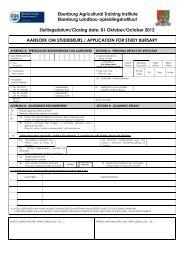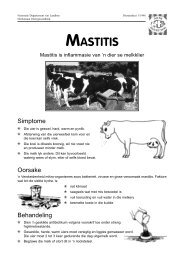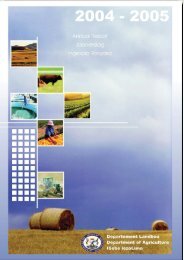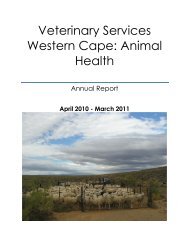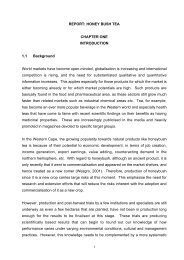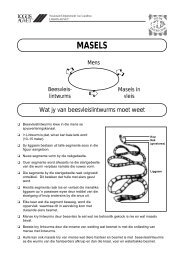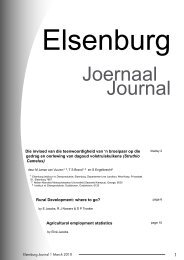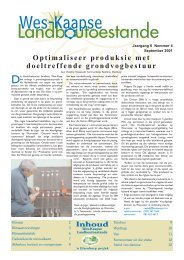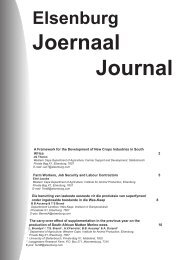The PROVIDE Project Standard Computable General Equilibrium ...
The PROVIDE Project Standard Computable General Equilibrium ...
The PROVIDE Project Standard Computable General Equilibrium ...
Create successful ePaper yourself
Turn your PDF publications into a flip-book with our unique Google optimized e-Paper software.
<strong>PROVIDE</strong> <strong>Project</strong> Technical Paper 2003: 3 October 2003<br />
<strong>The</strong> other behavioural relationships in the model are generally linear. A few features do<br />
however justify mention. First, all the tax rates are declared as parameters with associated<br />
scaling factors that are declared as variables. If a fiscal policy constraint is imposed then one<br />
or more of the sets of tax rates can be allowed to vary equiproportionately to define a new<br />
vector of tax rates that is consistent with the fiscal constraint. Relative tax rates can be<br />
adjusted by resetting the tax rate parameters. Similar scaling factors are available for a<br />
number of key parameters, e.g., household savings rates and inter-institutional transfers.<br />
Second, technology changes can be introduced through changes in the activity specific<br />
efficiency parameters. Third, the proportions of current expenditure on commodities defined<br />
to constitute subsistence consumption can be varied. Fourth, although a substantial proportion<br />
of the sub matrices relating to transfers, especially with the rest of the world, contain zero<br />
entries, the model allows changes in such transfers, e.g., aid transfers to the government from<br />
the rest of the world are defined equal to zero in the database but they can be made positive,<br />
or even negative, for model simulations. And fifth, the model is set up with a range of flexible<br />
closure rules. While the base model has a standard neoclassical model closure, e.g., full<br />
employment, savings driven investment and a floating exchange rate, these closure conditions<br />
can all be readily altered.<br />
2.2. Transaction Relationships<br />
<strong>The</strong> transactions relationships are laid out in Table 3, which is in two parts. <strong>The</strong> prices of<br />
domestically consumed (composite) commodities are defined as PQD c , and they are the same<br />
irrespective of which agent purchases the commodity. <strong>The</strong> quantities of commodities<br />
demanded domestically are divided between intermediate demand, QINTD c , and final<br />
demand, with final demand further subdivided between demands by households, QCD c ,<br />
enterprises, QENTD c , government, QGD c , investment, QINVD c , and stock changes,<br />
dstocconst c . <strong>The</strong> value of total domestic demand, at purchaser prices, is therefore PQD c *<br />
QQ c . Consequently the decision to represent export demand, QE c , as an entry in the<br />
commodity row is slightly misleading, since the domestic prices of exported commodities,<br />
PE = PWE * ER, do not accord with the law of one price. <strong>The</strong> representation is a space<br />
c<br />
c<br />
saving device that removes the need to include separate rows and columns for domestic and<br />
exported commodities. <strong>The</strong> price wedges between domestic and exported commodities are<br />
represented by export duties, te c , that are entered into the commodity columns. Commodity<br />
supplies come from domestic producers who receive the common prices, PXC c , for outputs<br />
irrespective of which activity produces the commodity, with the total domestic production of<br />
commodities being denoted as QXC c . Commodity imports, QM c , are valued carriage insurance<br />
and freight (cif) paid, such that the domestic price of imports, PM c , is defined as the world<br />
© S. McDonald<br />
7




